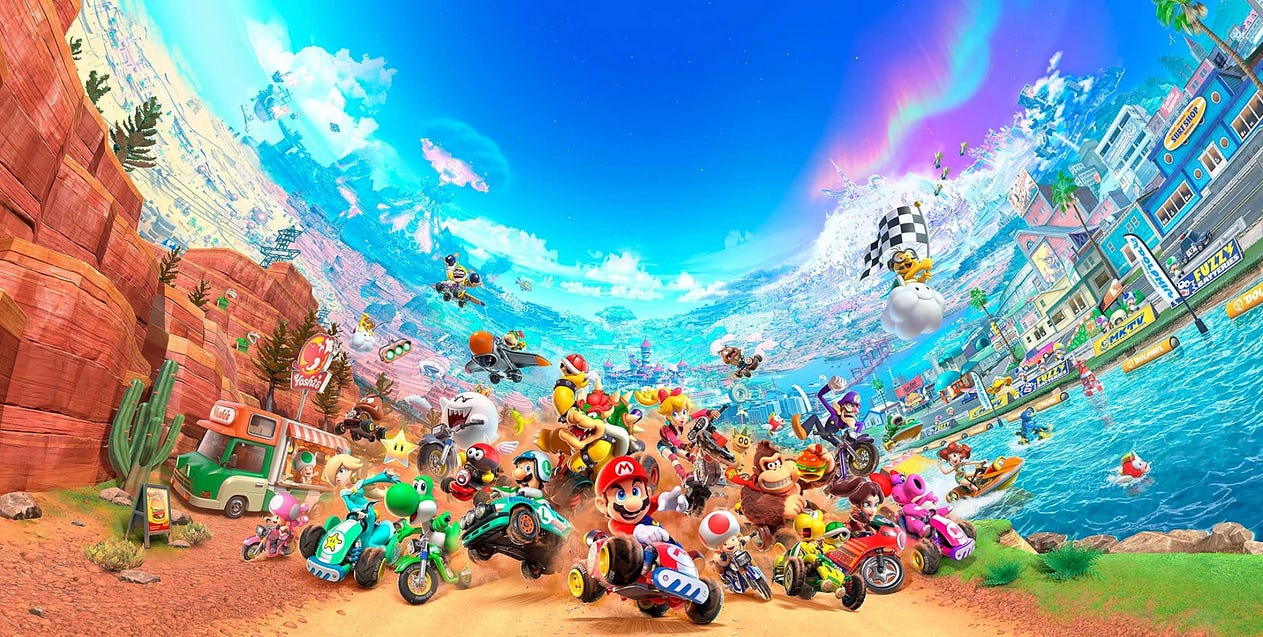‘Mario Kart World’ Is a Long-Awaited Refresh for Nintendo’s Seminal Racing Franchise
After over 10 years, Nintendo releases a full-fledged sequel to Mario Kart 8
It’s strange sometimes to go from covering heavy political topics to talking about Mario Kart. At face value, the subject probably seems trivial to a lot of readers. But part of my personal battle against what’s taking place in America right now is holding onto the things that I love, and not allowing them to be replaced by fear and despondency.
Keep reading with a 7-day free trial
Subscribe to The Gen Z Report to keep reading this post and get 7 days of free access to the full post archives.


